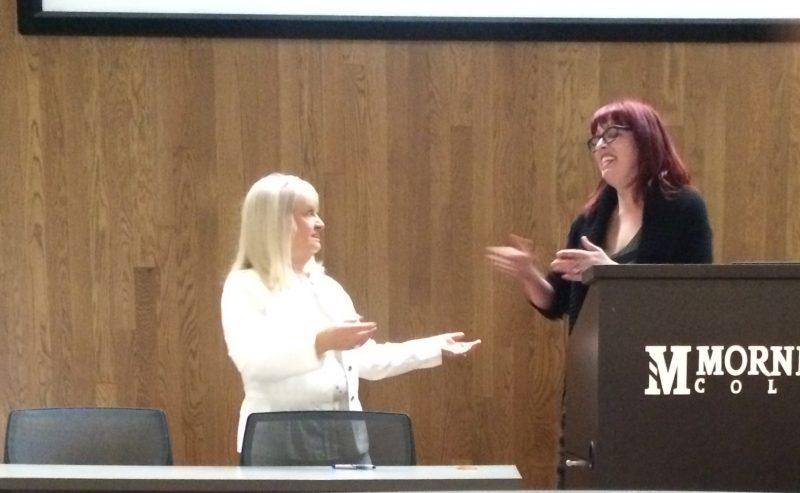(4.19.17) By Maggie Ganley – Hillary Clinton as a nutcracker, Sarah Palin as arm candy, suffragettes as home-wreckers, and Stalin in petticoats. Examples such as these prove that sexism is still rampant in politics

On April 11th at 7:00 in Weikert Auditorium, Professor Kitty Green gave a lecture called “The Historical Background of Sexism in American Politics” lecture or, as she wanted to call it, “The History of the Nasty Woman in American Politics.”
This lecture delved into the different ways women have been discriminated against in politics over the years, from the suffrage movement all the way to modern day.
Women are seen in four different lights in politics. They are either seen as mothers, sexual objects, pets, or iron maidens; none of which are the way women in a political background want to be portrayed.
Green excelled at providing multiple examples for each point by showing political cartoons that related to her arguments.
For example, the political cartoon called “A woman’s place is in her home” displayed a boy shaming a little girl for trying to promote the suffrage movement. This shows that even from a young age it is impressed upon women that they have no business in politics and should be focused on their duties in the household.
She also provided definitions throughout her lecture to avoid ambiguity and give further clarification.
Students appreciated the way Green presented the lecture. As student Madison Pierson said, “I really liked that Kitty not only showed the comparisons between early 20th century and more modern instances of sexism and politics, but that she also broke the sexism down into different tropes so that it was easier to understand.”
One of the main takeaways from this event is even though society is becoming more and more “progressive”, the themes of sexism have remained relatively the same from the start of the 1900s to now.






Leave a Reply